Mare Services
Artificial insemination (AI) of fresh, cooled or frozen semen
There are many different reasons an owner may choose to use artificial insemination when breeding their mare(s).
The ability to chill and freeze semen for transport makes each stallion available to a multitude of mares, from chilled semen travelling across Australia, to frozen semen flying across the world.
At Goulburn Valley Equine Hospital, our team of specialists has years of experience in AI techniques that allows for the best chance at achieving the successful pregnancy.
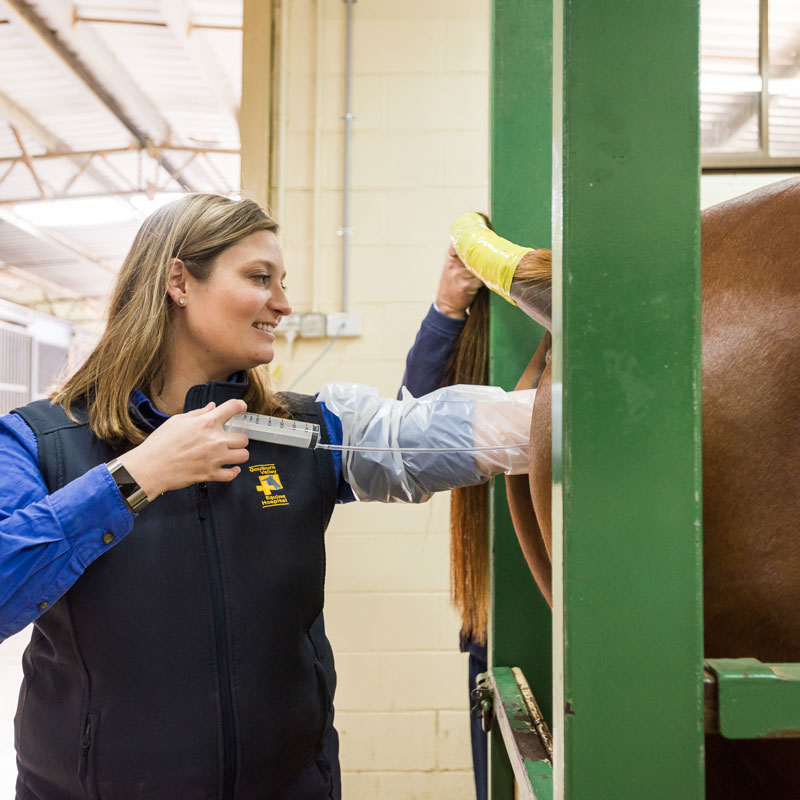
Embryo Transfer
There are many reasons to elect embryo transfer in the mare.
Embryo transfer is a great option for the young performance mare, a subfertile mare or a mare that may not be able to carry her pregnancy full term.
It is also a great option, for some breed disciplines, to obtain more than one foal out of a mare per season.
We are fortunate to have a large, established recipient mare herd that allows our reproduction team the best chance to achieve a successful pregnancy.
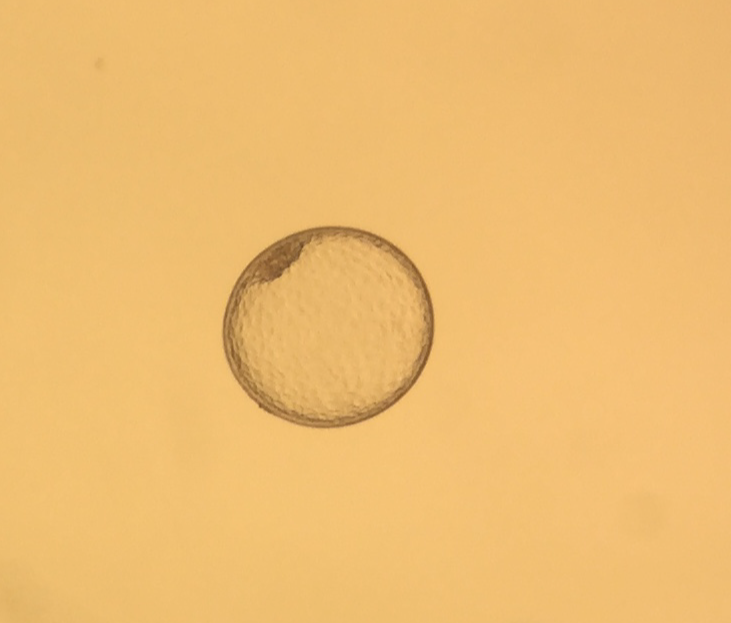
Another successful embryo flush! This is a grade-1 embryo flushed 7 days following ovulation.
Ultrasonography in the mare
The ability to examine a mare’s reproductive tract provides a low-risk, non-invasive procedure used with ultrasonography giving the opportunity to diagnose pregnancy earlier than by rectal palpation, effectively manage twins and detect impending early embryonic death (EED).
However, ultrasonography should not be limited to these areas. It can be used to diagnose uterine pathology, such as intrauterine fluid, air, debris, cysts and occasionally abscessation and neoplasia.
In addition, ultrasonographic examination of the ovaries may aid in determining stage of oestrous cycle, status of preovulatory follicles, development and morphologic assessment of the corpus luteum (CL) and in interpreting ovarian irregularities, such as anovulatory or haemorrhagic follicles, neoplasia and peri-ovarian cysts.
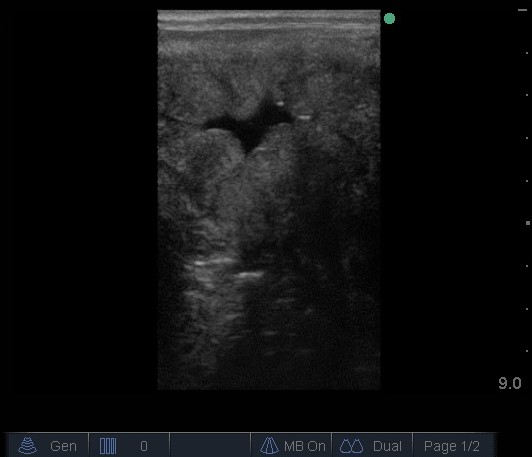
Fluid in the uterus noted by ultrasonography.
Twin Management
Because the expected outcome for mares with twins is so poor for either the mare or the resultant foal(s), it is our responsibility to successfully manage early pregnancies such that no mare delivers or aborts twin foals. This is most successfully achieved prior to fixation, days 14-16 of gestation, allowing one twin to be manually ablated. There are multiple options for twins diagnosed at later stages of gestation. The approach selected by our veterinarian will be dependent on stage of gestation along with the size and position of each pregnancy.
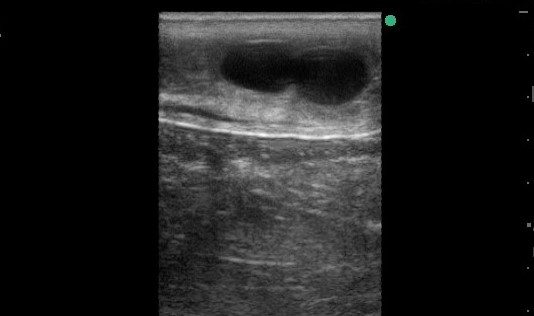
14 day twins in a Thoroughbred broodmare. This is the perfect stage to reduce to a single pregnancy!
Foetal Sexing
Accurate knowledge of the gender of an unborn foetus gives the owner an opportunity to decide to sell or keep a pregnant mare. Our team prefers to sex a foetus around 110-120 days gestation for the most accurate prediction of foetal sex. We utilise ultrasonography to visualise multiple predictors of foetal sex in each pregnancy including the foetal ovary, with confirmed colour flow and mammary gland in the filly or foetal testicle with confirmed colour flow pattern and prepuce or penis in the colt.
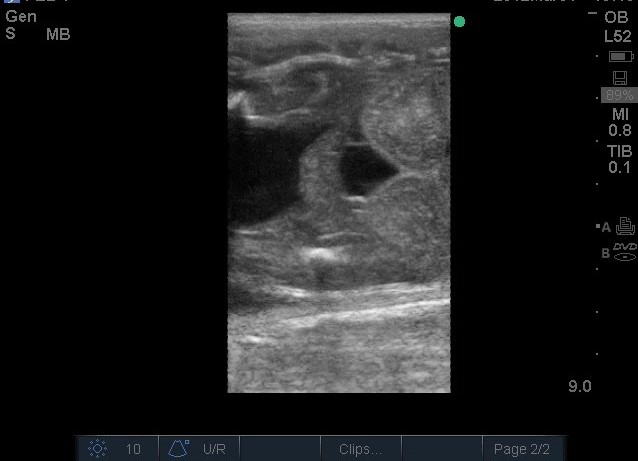
It’s a girl! Can you spot the foetal ovaries and mammary glands?
Evaluation and treatment of the subfertile or problem broodmare
Unfortunately not all mares are straight forward breeders; many mares can have a wide range of reproduction associated problems that limit fertility. Here at GVEH we specialise in both diagnosis and management of the problem broodmare.

We offer in-house culture and cytology for quick and reliable diagnostics!
Monitoring the high risk pregnant mare
Some mares each year fall into the ‘high risk’ category for pregnancy maintenance.
These mares may have lost pregnancies in the past or show signs of early parturition (foaling).
We have the ability to monitor these pregnancies using the pre-foaling examination and ultrasonography to institute appropriate therapy deemed necessary to optimise the birth of a healthy foal.
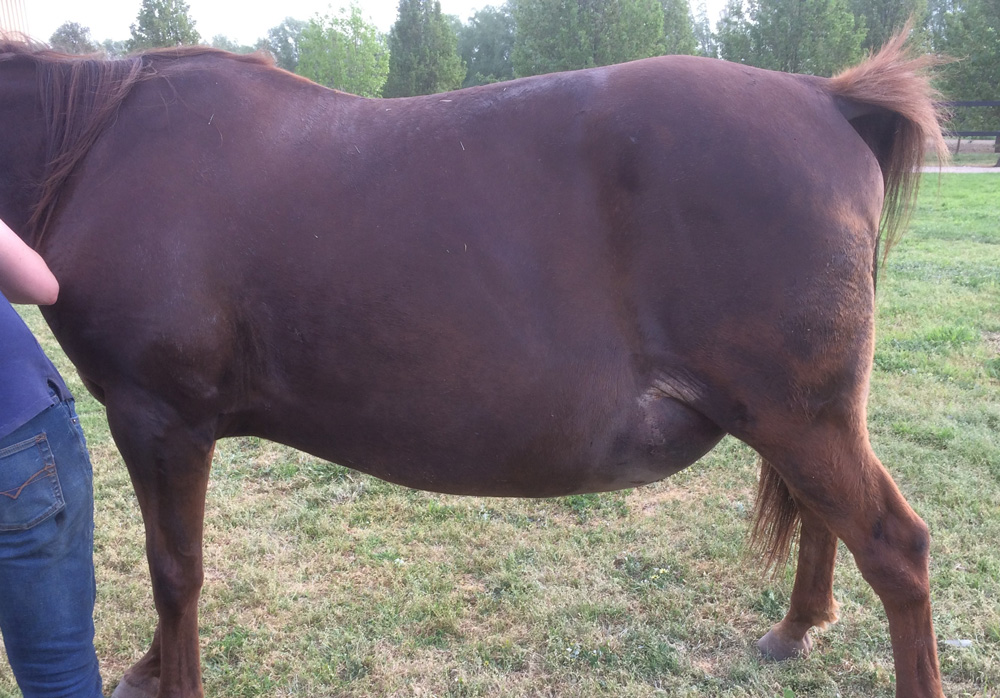
This pregnant mare has a prepubic tendon rupture and required emergency assistance to deliver her foal.
Reproductive surgery
Not all foal deliveries are easy on the mare.
Some mares can suffer from foaling complications which result in the mare needing surgery repair to the reproductive tract.
There are a lot of new techniques and modifications of old techniques that improve mares (and stallions) fertility as a result of surgery. These range from simple things like a ‘Caslicks’ to very sophisticated surgeries such repair of a uterine tear, removal of large ovarian tumors, reconstructions following birthing complications, or urethral extension to correct urine pooling.
